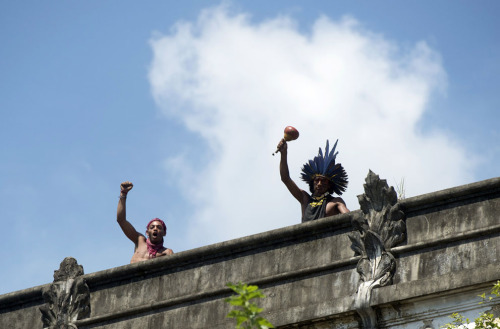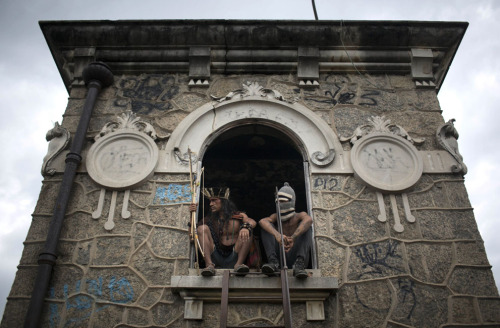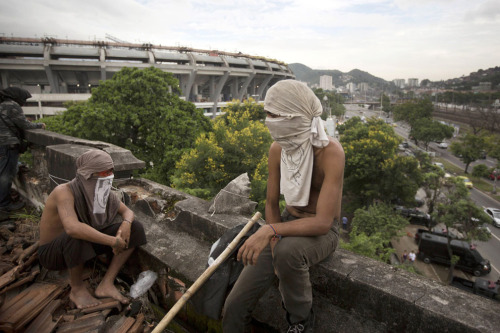The Opposition Path And China's Future
The Opposition Path and China's Future
The Opposition Path and China’s Future.
View Post
More Posts from Prasannachoudhary and Others

A fresh-faced, best-selling author who pens raunchy tales of young professionals in India.

It’s hard to know where to start in tallying up the explosive revelations in the Panama Papers, an analysis of leaked documents from global law firm Mossack Fonseca revealed by the International Consortium of Investigative Journalists (ICIJ).
Estonian Art And Literature: Big Ideas In A Small Country
Lacey Roop - “For Billy” (WoWPS 2014)
"Crack the glowsticks in your halo. Burn so beautiful that if the sun ever looked at you he’d go blind." Performing during prelims at the 2014 Women of the World Poetry Slam.

Alice Munro: “The Bear Came over the Mountain” : The New Yorker










Indigenous people of Brazil trying to prevent their eviction from an old indigenous museum which they have been living in for the past 7 years.
On March 22nd all of the inhabitants and their supporters were forcibly removed or arrested.
The building is being destroyed to make a parking lot :(

The Wayland Rudd Collection A project organized by Yevgeniy Fiks
The Wayland Rudd Collection focuses on the representation of Africans and African-Americans in Soviet visual culture. A point of departure for this project is Fiks’ collection of over 200 Soviet images (paintings, movie stills, posters, graphics, etc.) of Africans and African-Americans spanning from the 1920s to the 1980s. Fiks invited contemporary artists as well as activists, historians, sociologists, political theorists, and specialist in cultural studies to select one or more images from this collection and asked them to respond to it either via artwork, performance, lecture, or other forms.
Wayland Rudd was an American actor who began performing in the Hedgerow Theater in Rose Valley, Pennsylvania under the directorship of Jasper Deeter. Rudd first received critical acclaim for his performance in Eugene O’Neill’s “Emperor Jones.” Frustrated over racism in the entertainment industry, Rudd moved to the Soviet Union in 1932 where he began a successful career in Soviet Theater and Film including work with the famed Russian Director Vsevolod Meyerhold. He later received a degree from the Theatrical Art Institute in Moscow and worked at the Stanislavsky Opera and Drama Theater. Rudd died in Moscow in 1952.
During Wayland Rudd’s twenty year-long career in the Soviet Union, he appeared in numerous films, theatrical performances, and plays. He was also used as a model for paintings, drawings, and propaganda posters and, in many respects, defined the image of the “Negro” for generations of Soviet people. Although only a small section of the assembled images in The Wayland Rudd Collection are of Wayland Rudd, the project is given his name to commemorate this American-Soviet actor’s personal story as a case in point of the complex intersection of 20th century American-Soviet narrative.
The images in The Wayland Rudd Collection present a very complex and often contradictory mapping of the intersection of race and Communism in the Soviet context. The participatory aspect of this project adds the needed dimensions to show this complexity—giving the viewers the capacity to digest this history. This project investigates the promise and reality of Communism vis-à-vis the issue of race in the 20th century through the Soviet experiment. It presents this issue as unresolved, revealing the Soviet legacy on race as a mix bag of internationalism, solidarity, humanism, Communist ideals as well as exoticization, otherness, racist stereotyping, and hypocrisy.
Participants: Suzanne Broughel, Maria Buyondo, Dread Scott, Jenny Polak, Michael Paul Britto, Nikolay Oleynikov, Ivan Brazhkin, Haim Sokol, Kara Lynch, Dr. Allison Blakely, Dr. Romy Taylor, and others

The tide at night, murmur of bare feet on the sand.
The tide, at dawn, opens the eyelids of the day.
The tide breathes in the deep night and, sleeping, speaks in dreams.
The tide that licks the corpses that the coast throws at it.
The tide rises, races, howls, knocks down the door, breaks the furniture, and then, on the shore, softly weeps.
The tide, madwoman writing indecipherable signs on the rocks, signs of death.
The sand guards the secrets of the tide.
Who is the tide talking to, all night long?
—Octavio Paz, from “Target Practice” Art Credit Richard Diebenkorn.

'Naitaavad enaa, paro anyad asti' (There is not merely this, but a transcendent other). Rgveda. X, 31.8.
210 posts